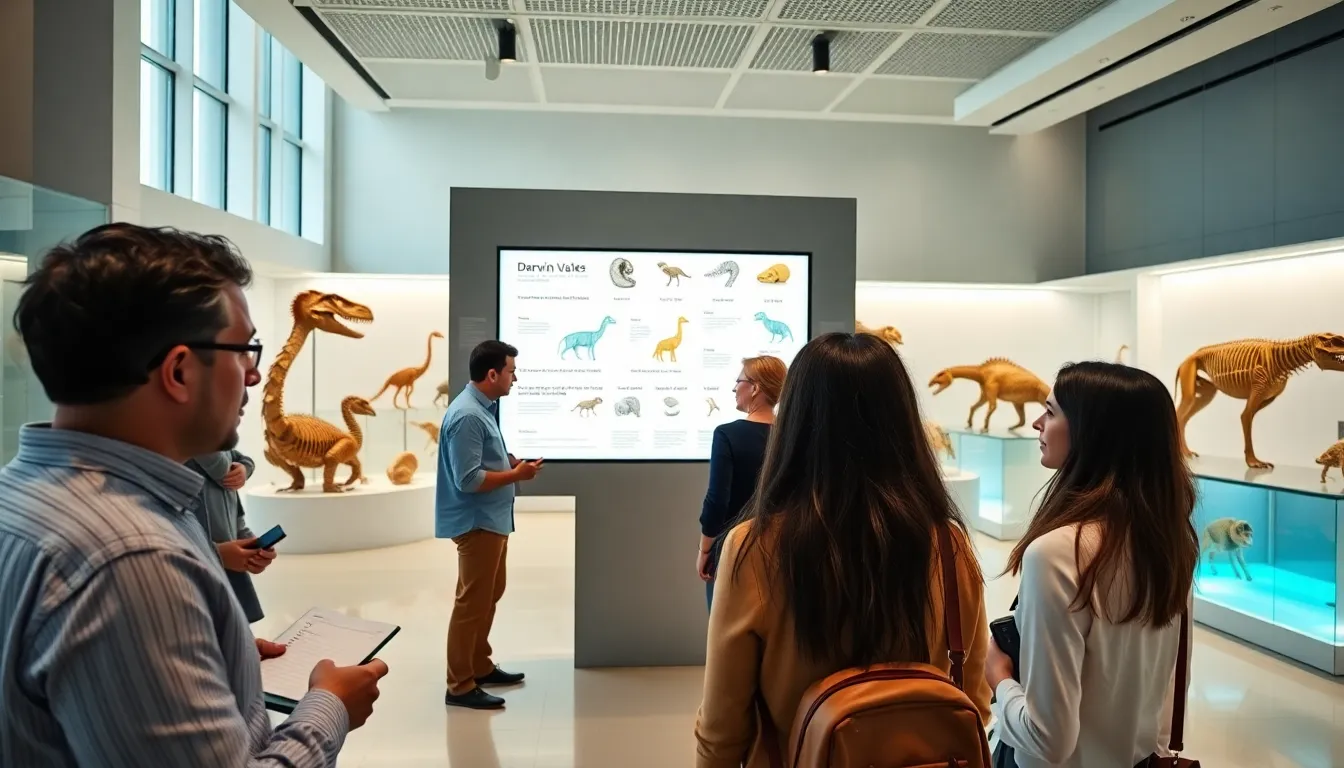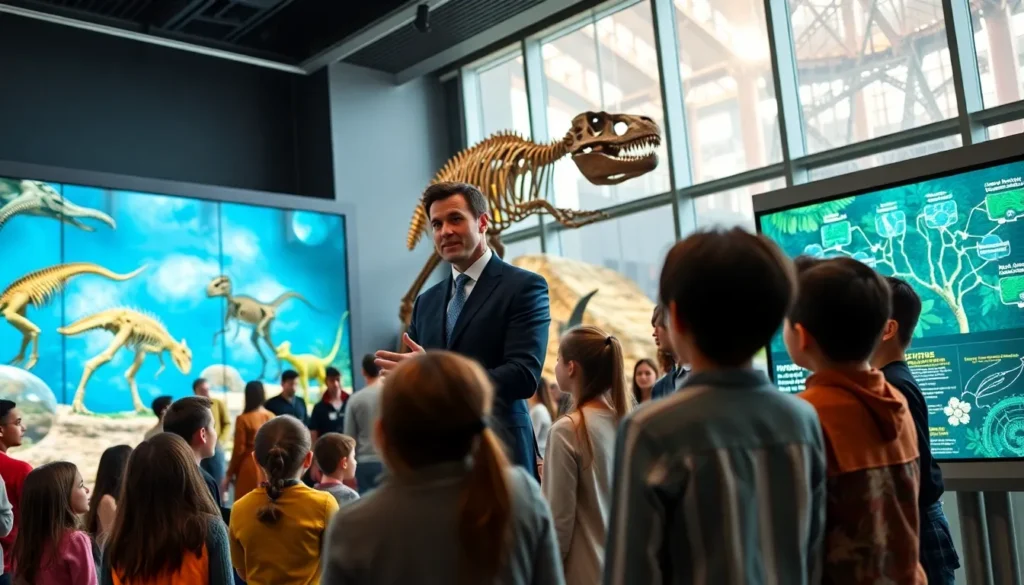Table of Contents
ToggleEver wondered how life on Earth evolved? If so, you’re not alone. Evolutionary biology is a riveting subject, and life science museums are the perfect places to explore it, even if it means tackling some dinosaur-sized curiosity. These museums don’t just house fossils and dioramas: they transform our understanding of evolution into an engaging experience. Let’s jump into why these institutions are essential in our quest for knowledge and how they intertwine with the digital age through platforms like Redwebzine.
The Importance Of Evolution In Life Sciences

Understanding evolution is crucial in the life sciences, providing insights into how species adapt to their environments over time. This area of study is not just about looking at fossils: it encompasses a wide range of concepts that explain the diversity of life we see today.
Key Concepts In Evolutionary Biology
Darwin’s theory of natural selection is at the heart of evolutionary biology. It suggests that those individuals whose traits are better suited to their environment are more likely to survive and reproduce. This fundamental concept forms a visionary framework for comprehending how genetic variations lead to evolutionary changes. Interestingly, modern genetics has propelled these ideas further, highlighting how DNA mutations create the diverse genetic makeup of a population. Other key concepts include adaptive radiation, speciation, and extinction, all of which paint a comprehensive picture of life’s evolution. Museums play a vital role in making these concepts tangible through exhibits that illustrate complex ideas with clarity.
Historical Context And Development Of Life Science Museums
Life science museums have a rich history, evolving from simple collections of curiosities to sophisticated institutions dedicated to education. Early museums, often private collections, sparked public interest in natural history and science around the 18th century, setting the stage for what we recognize today.
Major Life Science Museums Around The World
Museums like the Natural History Museum in London and the Smithsonian National Museum of Natural History in Washington D.C. are not just repositories of knowledge: they also serve as cultural landmarks. These institutions host exhibits that focus specifically on evolution, making scientific concepts accessible and engaging to the public. They attract millions of visitors each year, fostering an appreciation for science that extends beyond the classroom.
Exhibition Examples That Highlight Evolution
Exhibitions such as “Darwin’s Deadly Legacy” at the American Museum of Natural History and the “Evolution: The Greatest Show on Earth” at the Natural History Museum in London offer visitors immersive experiences. These displays use real specimens combined with interactive media to illustrate the history of life on Earth, reinforcing the importance of evolution in understanding biodiversity.
The Role Of Redwebzine In Promoting Life Science Education
In this digital era, platforms like Redwebzine have emerged as crucial players in promoting life science education. By harnessing the power of the internet, Redwebzine reaches wider audiences, sparking interest in evolutionary biology and its implications.
Engagement Strategies Used By Redwebzine
One of Redwebzine’s primary strategies includes interactive storytelling, allowing readers to engage with complex scientific concepts at their own pace. Their articles often feature unique graphics and infographics that simplify information, making it more digestible for the general public. Also, they run online courses and webinars that investigate into different aspects of evolutionary science, enhancing educational opportunities outside traditional classroom settings.
Collaborations With Life Science Museums
Also, Redwebzine collaborates with various life science museums to create content tailored to current exhibitions. This synergy not only amplifies the reach of museum programming but also enriches the digital platform’s content. These partnerships can provide visitors with pre-visit information or post-visit reflections, enhancing the overall educational experience.
Challenges Faced By Life Science Museums In Evolution Education
Even though their essential role, life science museums face several challenges in educating the public about evolution. Public perception often skews towards skepticism, making it difficult to convey scientific facts effectively.
Public Perception and Understanding Of Evolution
Some segments of society remain resistant to evolutionary theory due to differing beliefs or misunderstanding of scientific principles. This skepticism can lead to lower attendance and engagement at museums where evolution is a primary focus. Besides, the complexity of evolutionary concepts can lead to misinformation, emphasizing the need for clear, engaging communication to bridge gaps in understanding.
The Future Of Life Science Museums In A Rapidly Changing World
As society rapidly evolves, so too must life science museums adapt to new trends and technologies. Future-oriented exhibit design will play a pivotal role in attracting diverse audiences.
Innovative Approaches To Exhibit Design
Interactive exhibits that invite visitors to participate actively in the learning process are on the rise. Imagine exploring the evolutionary tree through touch screens or augmented reality. Such innovative approaches not only captivate visitors but also encourage deeper understanding through active engagement.
Integrating Technology And Interactive Learning
Technology will continue to be a cornerstone of future museum experiences. Virtual reality (VR), for example, could allow individuals to experience historical ecosystems or follow an evolutionary journey firsthand. By embedding these interactive elements into exhibits, museums can provide multifaceted learning experiences that resonate with a tech-savvy generation.







